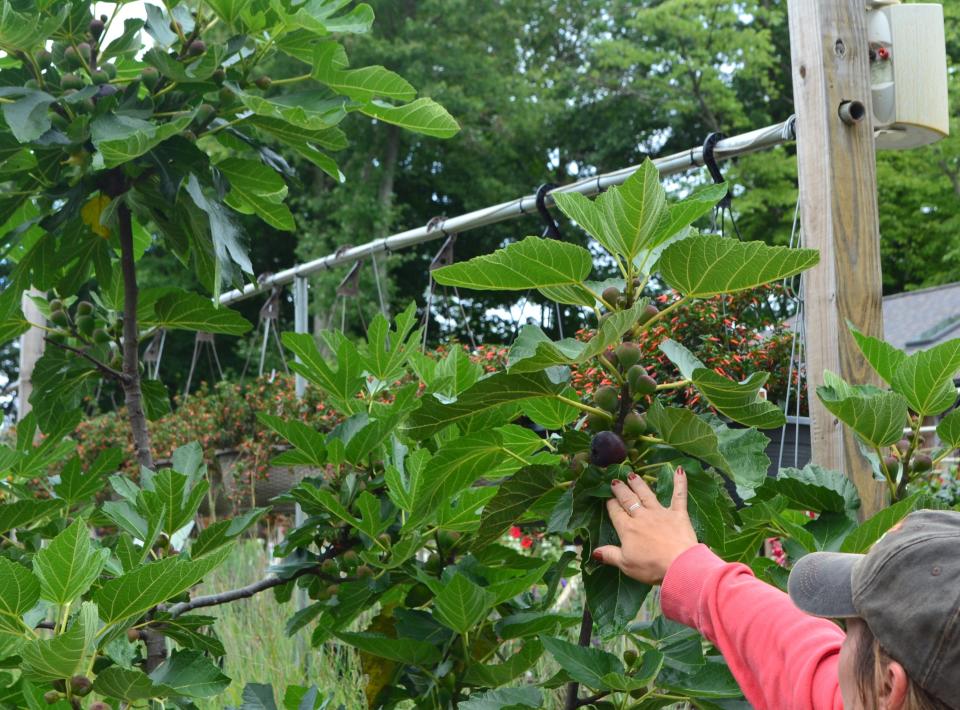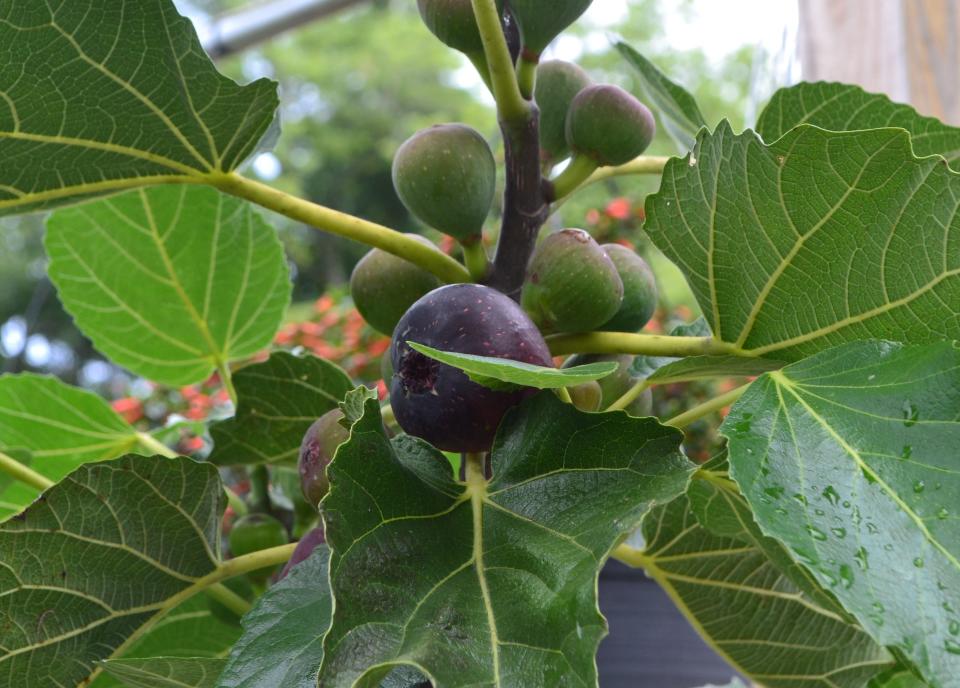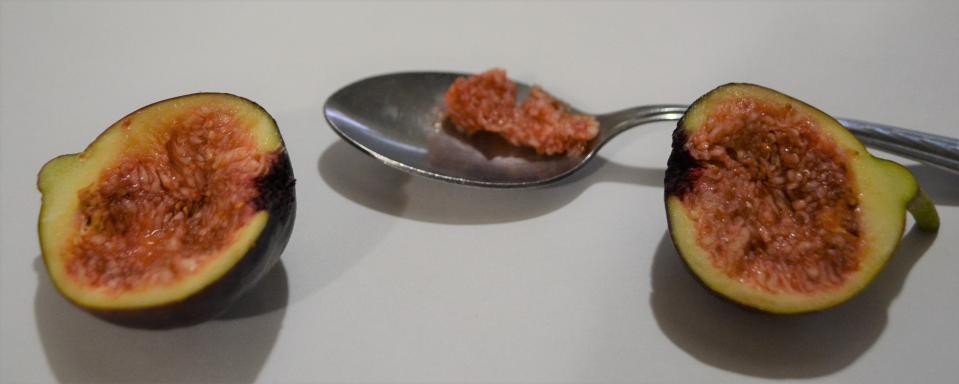A Stroll Through the Garden: Figs ready to harvest
I was at the pool this past week and one of my readers asked me a question about fig trees. Fig trees traditionally are a tropical fruit you won’t see growing outside in Jeromesville. At least that is what I have been told, and it aligns with my experience of the fruit. What was strange about this question is she said, “Did you know that you could grow fig trees here in Ohio?” I said “No!” She sent me to the Groovy Plants Ranch in Marengo.
Isn’t it always exciting to know that even though you have been studying plants or anything for a long time that you can still even learn more? Our brains are magnificent and incredible parts of who we are, and basically, define who we are. My stepdaughter blessed me recently by asking me to babysit for my 5-year-old grandson. We both have been having fun over the last few weeks and learning many things. Hopefully both of us will survive. He wears me out.
The first time I encountered a fig tree was a Brown Turkey fig tree or Ficus carica. It was at a rental we had just installed in one of our designs and there was fruit on it. My mother had purchased this older fig tree that actually had figs growing on it. As I had talked with my mother, I asked her whether we could grow them outside and she said "No Eric, we do not live in a tropical zone." Okay, I said, and we continued to take care of this beautiful plant for many years. People enjoyed the fruit that was on the tree, but we found it difficult to get more figs.

The basic problem is there is a specialized little wasp that pollinates figs. This little insect is called the fig wasp, a member of the Agaonidae family. One of the other challenges is that you need boy figs and girl figs to be able to produce the fruit.

Figs are a sweet fruit from Mediterranean, southwest Asia
Our fig trees originally are from the Mediterranean and southwest Asia. There are 850 different species in the family from woody trees, shrubs, vines and more. The figs are native to the tropics and a few species extend into the semi-tropics. Figs have been here since ancient times and is even mentioned in the Bible. This food resource is important for many people in these nations and is also used by wildlife.
Figs that are normally cultivated for their fruit, unlike Fiddle leaf fig or Ficus Benjamina, have a sweet fruit. Only Brown Turkey and Chicago Hardy have even been thought about being able to grow in Ohio. As I was studying this tree last week, I always wondered about how complex this tree really is. The fig fruit is a multiple type of fruit called syconium. Inside the teardrop shape there are many small flowers on an inverted, nearly closed receptacle. These tiny wasps have evolved together with the fig to enable an unusual way to set fruit.
Parthenocarpy is a process where plants set fruit from unfertilized ovules. They do not contain seeds but rather partially developed ovules. Fig cultivars of the San Pedro and Smyrna types are not recommended for Ohio, as the wasp needed for pollination does not survive the cold winters in Ohio. This developed the next question. If a tropical wasp, being the fig wasp, has adapted to the point that it can survive in the cold of Ohio, how would it do that?

In Piketon, between Portsmouth and Chillicothe, one of the leading fruit researchers in Ohio has been doing research at the Piketon Agricutural Research facility operated by The Ohio State University. His name is Gary Gao. When I took the master gardeners class many years ago, Gao taught us important information about fruit. As I recall it was very informative. Gao has found that in Piketon you can grow these figs mentioned above in Ohio, but to get fruit has been a serious issue.
From September to November is the time frame in which the figs are ready to harvest. Normally our killing frost comes on and takes its share of the fig crop even in Piketon. Inside a high tunnel greenhouse, you should get 2 to 5 pounds of figs while you can experience 1 pound of figs outside the tunnel without protection. The cold will get the largest percentage of the figs. A market study was done in Kentucky about the viability of the fruit and discovered that you need to produce 10 pounds of figs for $3 per pound to make a profit. Having a high tunnel could help make figs a more viable orchard crop.
What I know is that they are sweet and tasty as I ate the one I had from Marengo. Just to let you know — there weren’t very many that were ready but there were a lot on the tree.
Hope you have a great stroll through your garden this week. If you come across any challenges in your garden, let me know and drop me an email at ericlarson546@yahoo.com. I shall do the best I can to help. You can see a copy of this column as a blog in my website soon at ohioheallthyfoodcooperative.com soon. Thank you for participating in our column.
Eric Larson of Jeromesville is a veteran landscaper and gardening enthusiast and a founding board member of the Ohio Chapter of Association of Professional Landscape Designers.
This article originally appeared on Mansfield News Journal: All about fig trees and how they fare in Ohio

